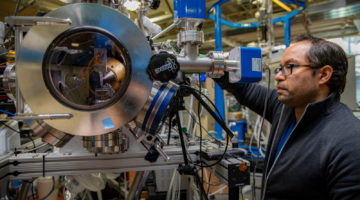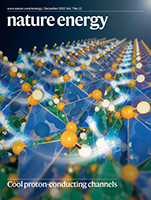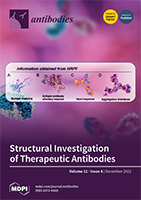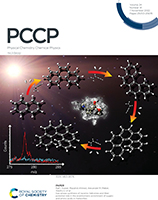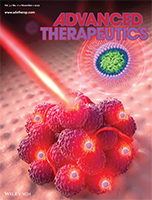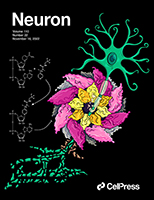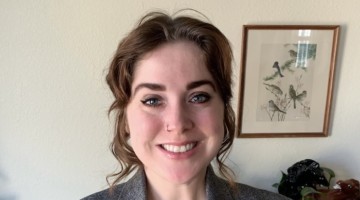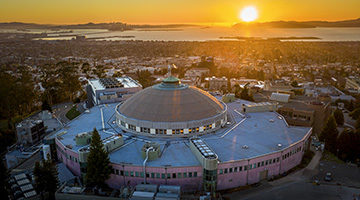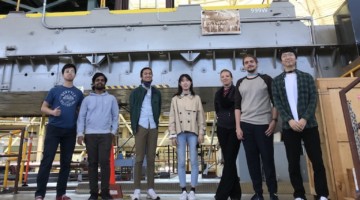Researchers at the ALS recently led the first direct measurement of the Donnan potential, an electric potential that arises from an imbalance of charges at the interface of a charged membrane and a liquid. The work could yield new insights in areas such as ion transport through cellular membranes, ion exchange membranes in energy storage strategies, and water purification technologies. Read more »
All News & Updates
2022 Highly Cited Researchers
Clarivate recognizes the true pioneers in their fields over the last decade, demonstrated by the production of multiple highly-cited papers that rank in the top 1% by citations for field and year in the Web of Science™. Congratulations to Jinghua Guo, Zahid Hussain, Sung-Kwan Mo, and Wanli Yang! Read more »
Enhanced low-temperature proton conductivity in hydrogen-intercalated brownmillerite oxide
Solid oxide materials typically need high temperatures to allow appreciable ion transport, limiting their flexibility as electrolytes for energy devices. Lu et al. now show unusually high proton conductivity in a hydrogenated oxide between 40 °C and 140 °C, which they attribute to ordered vacancy channels and high proton concentrations. Read more »
Structural Investigation of Therapeutic Antibodies Using Hydroxyl Radical Protein Footprinting Methods
Well-known high-resolution structural methods are often used to characterize antibody structures, but many require specialized sample preparation that may perturb antibody structure. We describe here the relatively new method of hydroxyl radical protein footprinting, a solution-state method that can provide structural and kinetic information on antibodies or antibody–antigen interactions useful for therapeutic antibody design. Read more »
Gas-phase synthesis of racemic helicenes and their potential role in the enantiomeric enrichment of sugars and amino acids in meteorites
Molecular-beam experiments with isomer-selective photoionization via a targeted, vinylacetylene-mediated gas-phase reaction of aromatic helicenyl radicals coupled with electronic structure calculations and astrochemical modeling reveal an elegant synthetic route to racemic helicenes – ortho-fused polycyclic aromatic hydrocarbons (PAHs), in which benzene building blocks form helically-shaped molecules. Read more »
Surface Charge and Nanoparticle Chromophore Coupling to Achieve Fast Exciton Quenching and Efficient Charge Separation in Photoacoustic Imaging (PAI) and Photothermal therapy (PTT)
Organic semiconductor nanoparticles (OSNs) convert absorbed light into heat, and are commonly used in photothermal therapy and photoacoustic imaging. Here, the OAN, Y6, is shown to form strong intermolecular packing, manipulated by surface charge under restrained sizes, yielding new pi-pi stacking and fast exciton quenching. The temperature of the tumor area can rise to more than 70 degrees under NIR irradiation, which can effectively ablate a tumor. Read more »
Uncompetitive, adduct-forming SARM1 inhibitors are neuroprotective in preclinical models of nerve injury and disease
Researchers describe potent small-molecule inhibitors that are neuroprotective in preclinical models of nerve injury and disease. The cover depicts the destruction of an axon by the enzyme SARM1, shown disproportionately large to convey its catastrophic role in driving degeneration once it is activated upon injury. Read more »
Andrea Taylor, Senior Administrator
As a member of the business administration team, Andrea Taylor is involved in many processes across the ALS—work that draws on her previous roles in hospitality. She has also lent her musical talents to our User Meetings, so be sure to check out the music videos. Read more »
Advanced Light Source Upgrade Approved to Start Construction
The ALS has received federal approval to start construction on an upgrade that will boost the brightness of its x-ray beams at least a hundredfold. The DOE approval, known as Critical Decision 3 (CD-3), formally releases funds for purchasing, building, and installing upgrades to the ALS. Read more »
Spring 2023 ALS Doctoral & Postdoctoral Fellowship Applications Open
ALS Doctoral and Postdoctoral Fellowships allow researchers to spend a year in residence at Berkeley Lab working at the frontier of synchrotron radiation research and helping advance state-of-the-art techniques and applications. The next application cycle closes December 9, 2022. Read more »
- « Previous Page
- 1
- …
- 30
- 31
- 32
- 33
- 34
- …
- 139
- Next Page »
